The new Bluetooth-enabled MetaWatch will forever change how you use your iPhone, though in its current form the advanced wrist watch is not yet ready for the mass market.
The idea of a "smart watch" is not new, but the concept has seen a resurgence in recent years as gadgets have continued to become impossibly small. There's been a particular interest in watches that use low-power displays and receive information from a connected smartphone via Bluetooth.
For the last year, an early version of the MetaWatch was available to developers and enthusiasts, and a decent-size community, particularly on the Android platform, has emerged.
But with this year's debut of the iOS 6 mobile operating system for iPhone, Apple expanded Bluetooth functionality in a crucial way: text message alerts can be sent wirelessly to external devices. This paved the way for MetaWatch to make a big push to iPhone users, which it did with a Kickstarter campaign earlier this year.
And this fall, MetaWatch orders have begun shipping to both Kickstarter backers and new purchasers alike. The MetaWatch is available in three different styles: the sporty "Strata" ($179), the more classic looking "Frame" ($199), and a $299 limited edition design by Susan Kare, a graphic designer who created many of the original Apple Macintosh's user interface elements in the 1980s. The device is compatible with iPhones that feature Bluetooth Low Energy support, which are the iPhone 4S and the iPhone 5.
For a few days now, we've been using the Frame version of the MetaWatch with an iPhone 5. The hardware is well designed, and any concerns we had about the watch face potentially being too big quickly faded away once we had the hardware.
The front of the device includes a large LCD display that can be illuminated with a front light, while the left and right sides of the watch each feature three hardware buttons. On the back are four pins that can be connected to a charging clip.
The charging clip is awkward to position onto the device and we frequently had trouble lining it up just right. However, this design decision does have a purpose: It allows the MetaWatch to be waterproof at a measurement of 3 ATM (10 meters) for the Frame, and 5 ATM (50 feet) for the Strata.
The MetaWatch Frame is low profile enough that it won't stand out in public as a geeky computer on your wrist. Despite what it offers it still looks like a watch. But the relatively large display, which is slightly low resolution at just 96 by 96 pixels, will inevitably draw inquiries about it. It's stylish, not gaudy.
After only a few days of use, it quickly became clear that a smart watch would change how we use our smartphones. Almost immediately, the annoying habit of needing to incessantly pull the phone out of your pocket faded away. Granted, that ritual found itself instead replaced by looking at the watch. But a quick glance is faster and more socially acceptable than pulling out a phone at the dinner table.
It's very nice to be able to check your new message or incoming phone call without necessarily having to put your iPhone in your hand. At a live improv show, the iPhone stayed pocketed and a quick glance at the MetaWatch showed who was texting us. On the golf course, the iPhone stayed in the golf cart while call and text alerts buzzed on the MetaWatch. The built-in vibration on the MetaWatch is particularly welcome.
The MetaWatch display is a mixed bag. We weren't particularly bothered by the low resolution, but the reflective properties of the glass cover did take some getting used to. That said, the watch can be easily read in sunlight, and while an included top light does not evenly illuminate the screen as a backlight would, it still makes it easy to read the MetaWatch in the dark. The screen is disappointing, but it's functional and does not detract from the usefulness of the device.
The front of the device also includes an ambient light sensor that is not currently used by the official software, though enthusiasts on Android have developed software that will automatically enable the backlight when an alert is received in the dark. We look forward to having this kind of advanced functionality come to the iPhone as the MetaWatch software and development community improves and grows.
Widgets on the MetaWatch screen are selected through an accompanying iPhone application, which is available as a free download from the App Store. At present the options are limited: Aside from the obvious clock, the MetaWatch also displays current local weather information, personal calendar entries, stock quotes, and the battery status of your iPhone.
Setup between the MetaWatch and its application is easy, and activities such as changing widget sizes and locations through the iPhone app is a breeze. Current alerts that can buzz the watch include phone calls, text messages (including iMessages), calendar alerts, a low battery warning, and a notification when the iPhone has been fully charged. Support for Facebook, Twitter and e-mail notifications is advertised as coming soon.
One great feature of the MetaWatch is the option to have it buzz when the Bluetooth connection is lost between it and an iPhone. With this feature, if you accidentally leave your phone behind, you'll be alerted with a buzz on the wrist.
By default the MetaWatch app hooks into applications such as the iOS 6 Clock, Stocks, Weather and more. Currently unavailable is its "Application Mode," which will allow third-party applications to work with the MetaWatch. An official SDK for developers is said to be coming in the very near future, and we hope developer support on the iPhone will be as enthusiastic as it has been over the last year for Android.
While daily use of the MetaWatch has been a pleasure, the platform is still too rough around the edges to recommend to most users. Right out of the box we needed to update the firmware — a process that currently requires a Windows PC. MetaWatch has said that an updater compatible with Apple's Mac OS X will be available soon.
Update: The MetaWatch Mac updater is now available in pre-release form for OS X 10.7 Lion and up.
We also experienced a handful of random disconnects from the iPhone, though these issues were easily fixed by launching the official MetaWatch application on our handset and simply reconnecting. We also experienced one hard crash with our MetaWatch which was resolved by resetting the device.
The most interesting aspect of the MetaWatch is its potential: Its value in making smartphone alerts viewable at a quick glance is immediately clear. Real-life use gives the belief that the smart watch industry could become a major accessory market.
There are other high-profile smart watches coming down the pike, most notably the $150 Pebble, which earned more than $10 million from Kickstarter. But the Pebble has also seen a number of delays and has not yet gone into mass production. The MetaWatch, meanwhile, is now available.
 Neil Hughes
Neil Hughes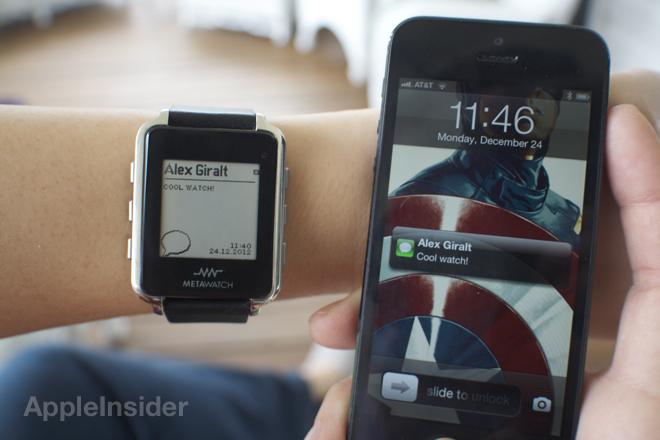
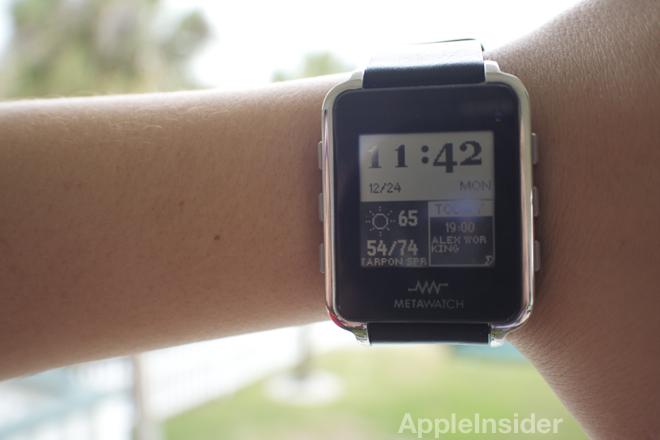
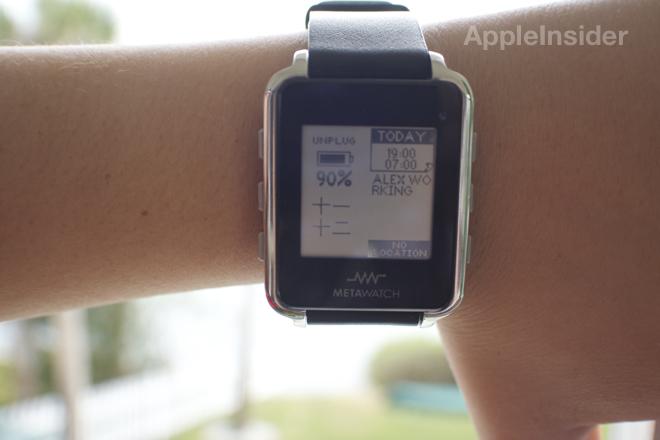
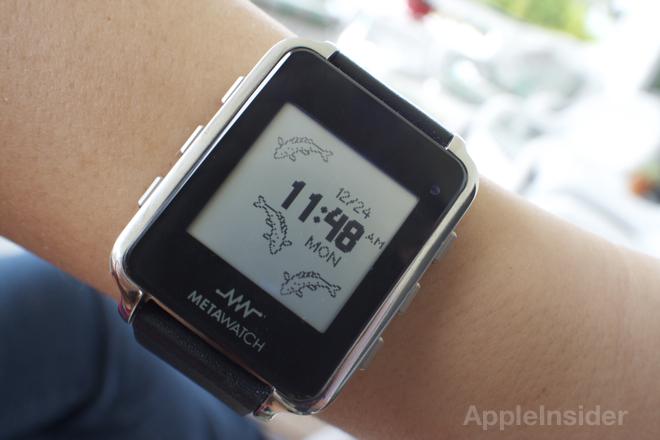
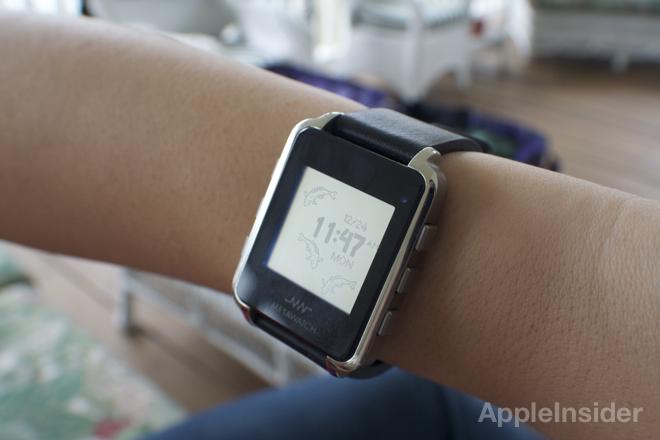
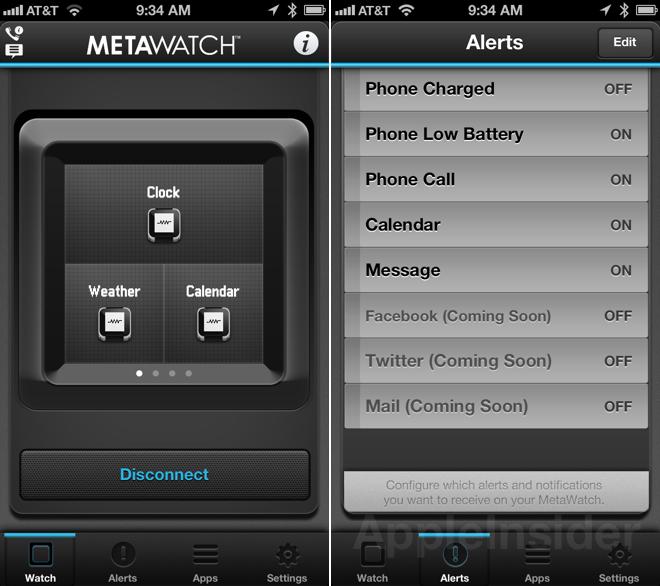
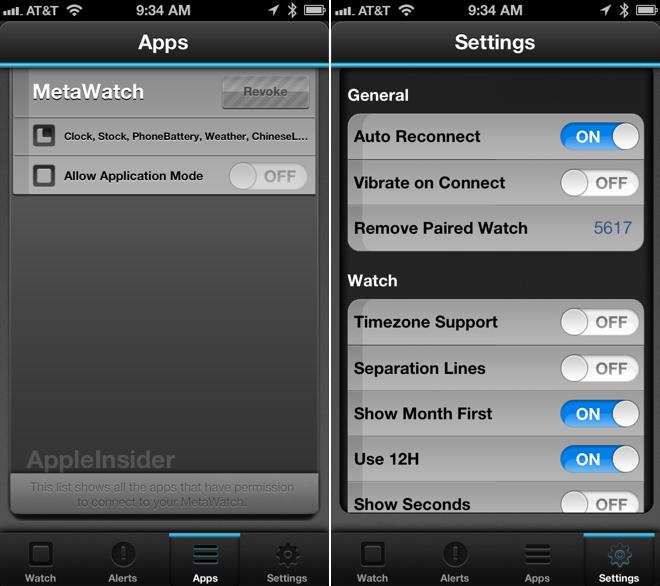
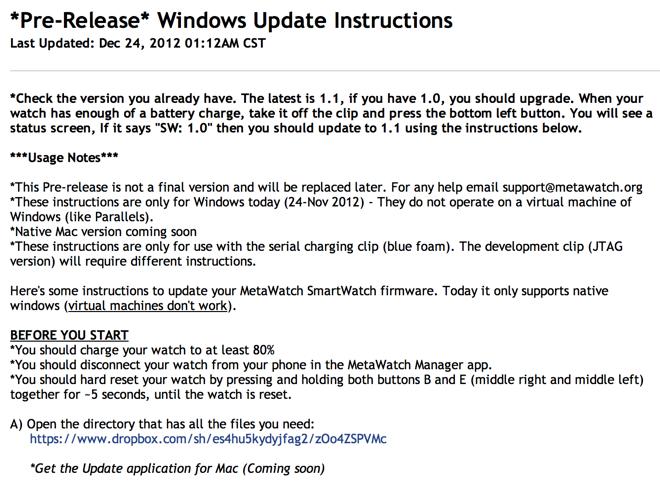







-m.jpg)






 Charles Martin
Charles Martin
 Christine McKee
Christine McKee
 Wesley Hilliard
Wesley Hilliard
 Malcolm Owen
Malcolm Owen
 Andrew Orr
Andrew Orr
 William Gallagher
William Gallagher
 Sponsored Content
Sponsored Content







41 Comments
Nice idea but boy is that watch ugly.
[quote name="RichL" url="/t/155193/first-look-metawatch-smart-watch-pushes-iphone-alerts-to-your-wrist#post_2251107"]Nice idea but boy is that watch ugly.[/quote] Perhaps, but it's a nice idea for v 1.0 and will likely sell well - even at the price.
Add a microphone so I can tell Siri to reply to a text message, then it's perfect!
Should have linked to the Pebble. http://www.kickstarter.com/projects/597507018/pebble-e-paper-watch-for-iphone-and-android http://getpebble.com/ They need to update their sites as iOS 6 allows text over Bluetooth but that should just be a software update. I've wanted one of these for a while. I wanted the iPod Nano to become this but they went and enlarged it this fall smh And same as LarryA. I want to talk to and get responses from Siri through it.
Eww, I won't go so far as to call this watch "ugly" but rather say looks to me like something that was bought in a street fair in China. Very square and thick and the display is not very impressive. I just took delivery of the Bluetooth 4.0 equipped Casio G-Shock GB-6900AA today and am loving it so far. I can recommend it highly.